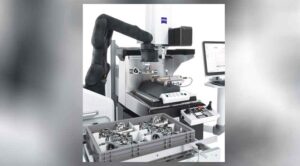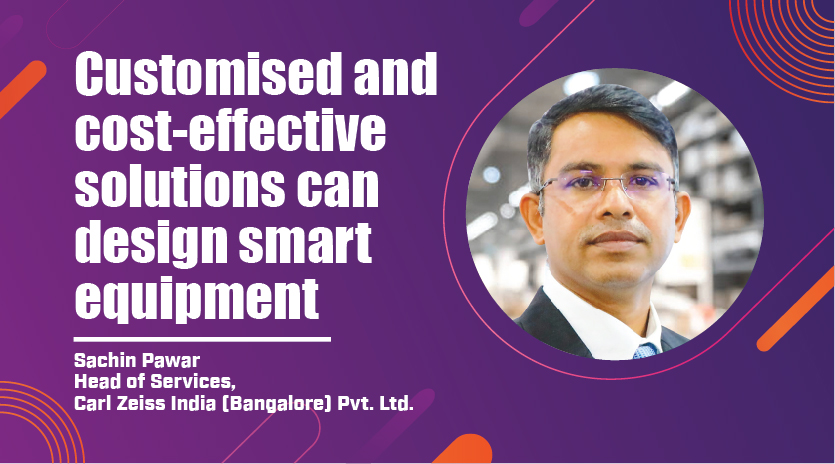Customised and cost-effective solutions can design smart equipment
By OEM Update Editorial December 12, 2022 3:53 pm IST
Industry 5.0 revolution will come soon with human and machine collaboration to run the smart factories requiring a limited skilled workforce.
Smart factories in the present times
The smart factory concept first began globally and then in India, but it is still at an elementary stage, and there is a long way to go. Some of the technologies involved require a more developed ecosystem and cost-effective solution to bring the smart factories concepts into reality in India or globally.

Industry 5.0 in the context of human and machine collaboration for future manufacturing
Industry 5.0 revolution will come soon with human and machine collaboration to run the smart factories requiring a limited skilled workforce. Most companies adopting the Industry 4.0 concept are building the foundation for the Industry 5.0 revolution. Industry 4.0 will be the first stepping stone because automation limits the required workforce for more unresting productivity. With the introduction of Machine-power, we are moving towards that goal. Human Skills will always be required but in a limited way.
Digitisation and robotics for efficient manufacturing and productivity enhancement
Digitalisation is essential for smart factories, which must communicate with intelligent, teachable and self-monitoring robots. A Smart factory will only happen, which is a part of the Industry 5.0 revolution. This will be supportive, if not necessary, to enhance productivity with quick & cost-effective customised products and customer-centric solutions.

5G technology is critical for communicating between robots and other digital solutions. We cannot think Smart Factories will succeed without the 5G technology. When it comes to efficiency, we can already see the results of its efficiency, where it can be used to control machines and vehicles remotely. Applications of 5G technology usages in mining, medical, and defence sectors which can be considered as human life sustainability sectors, are already being worked on with pilot projects running in silos. We are heading to a new age of industrial revolution. We should see it as an opportunity to utilise it for better productivity and get a throughput from it to justify the 5G technology as an asset.
Other trends visible besides smart factories and equipment
Additive manufacturing is coming in a big way with machine learning and AI intelligence integrated to produce complex parts cost-effectively. Besides industrial applications, robotics and robots or Humanoids are a trend that has been talked about the most. With 5G, it will be possible for humanoids to be productive and double, if not triple, the output. Also, an increase in customised products with quick and cost-effective solutions will soon follow, leading to smart equipment.
Integration of AI and machine learning in manufacturing
AI and machine learning will play a vital role in manufacturing and measurement, which will help to reduce defective parts and help to correct the process well in advance to avoid defective parts integrated inline in the production process. AI Integrated software is already making its way into the industry. We also have AI and machine learning integrated software, which is already helping our manufacturers reduce the rejection of parts and increase the manufacturing output. PiWEB, CALYPSO, Reverse Engineering, ZEISS GOM inspect, to name a few.

Digital manufacturing software solutions help manufacturers
Digital manufacturing software solutions help manufacturers understand the production trend, Machine and Man performance, and Tool status, which improves manufacturing productivity. They give insights into the manufacturing environment, which was invisible until today. It helps to analyse and take corrective actions that would have not been possible previously.
Cookie Consent
We use cookies to personalize your experience. By continuing to visit this website you agree to our Terms & Conditions, Privacy Policy and Cookie Policy.


















